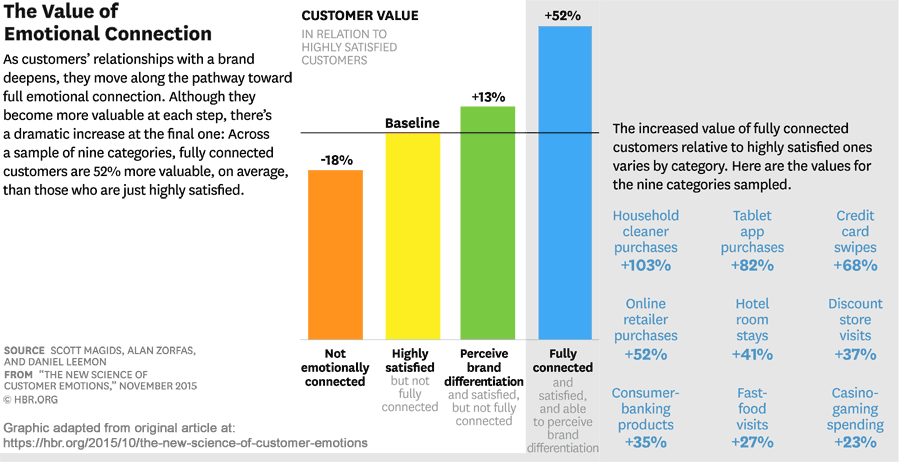
Szőnyi Kino Garden: A Festival Built on Community, Creativity, and Resilience
2025. March 4.
Building effective systems in the workplace: Boundaries, responsibilities, and human behavior
2025. August 10.LONDON, ENGLAND - SEPTEMBER 03: Banksy's Love is in the Bin (2018) is installed at Sotheby's on September 03, 2021 in London, England. Banksy's Love is in the Bin (est. £4 - 6 million) will go on public view this weekend for a special two day-view at Sotheby's New Bond Street Galleries, before embarking on a global tour ahead of the Contemporary Art Evening Auction at Sotheby's London on October 14. (Photo by Tristan Fewings/Getty Images for Sotheby's)
Branding is essentially how we define ourselves - and how we want others to see us. Sometimes it can be difficult to phrase that clearly and simply, which is why branding often starts with investigating and defining our goals, values, and target audiences.
This foundational work is essential - not only for marketing, but for staying on track. It serves as a compass when daily operations or external pressures start to overwhelm us. A strong brand helps us make decisions that align not just with short-term fixes, but with a long-term vision. That is what I believe true branding is about.
Just like people build up a personal identity, businesses build up a brand. And just like with people, it’s often obvious when that brand isn’t honest - when it’s shaped purely by strategy to appeal to a certain group, rather than being an authentic representation of who they really are.
The Foundation of Branding: Knowing and Aligning with Yourself
I think honesty is crucial for long-term success. Only authenticity stands the test of time. Of course, authenticity doesn't mean you can’t follow trends. In fact, sometimes following trends - or at least being aware of them - is necessary. For example, if you're using the internet (any social media platform, or even google search engine) for promotion, you're already operating within the framework of current algorithms. Ignoring that reality won’t make your brand more authentic, just less visible.
But the point is not whether you follow trends or not, the point is how. If it’s part of your concept and serves your goals, great. But if it’s just to copy what others are doing, it becomes noise, not branding.
This is why the first step of branding is defining yourself clearly - not only to find your audience, which is important, but also to act as a mirror and a reminder for yourself. When you hit challenges, get distracted, or feel unsure, you can go back to your brand core and ask, “Does this still align with what I’m here to do?”


Branding with Authenticity in a Trend-Driven World
I believe building trust through branding is something entirely different from simply defining yourself. It becomes relevant when you offer something truly unique, when you don't want to hand over your creative decisions to trends or outside expectations. It's about protecting the essence of what you do and maintaining your independence while still finding ways to connect with people.
This is especially true for artists, small businesses, cultural spaces, and increasingly, content creators. Content creators are an interesting example because their visibility depends so much on trends. But the ones who really last are those who manage to shape trends rather than just chase them. They stay true to who they are, and that authenticity becomes their strength.
That said, I'm not saying there’s one right way. It's not about declaring one strategy better than the other. Sometimes, trends are helpful. Sometimes, following them makes sense for your audience and goals. Even when you're aiming to build a brand on honesty and authenticity, you might still need to adapt to certain platforms or digital behaviors. That's okay. The key is awareness. You need to know why you're making each decision and whether it serves your bigger picture.
It’s also important to acknowledge that even if you follow trends, that doesn’t automatically make you inauthentic. It becomes a problem only when you follow them mindlessly, or when you pretend you’re not part of that system. Because the moment you show up online, you are part of the system. The power comes from being aware of that, and choosing to navigate it consciously, on your own terms.
How to building true attachment and trust
I'm still exploring this topic, but I find it endlessly fascinating - especially how belief in a brand forms. I see two main directions this can take:
I. Emotional Attachment
This is when a customer or audience member connects with a brand on a personal level. It speaks to their values, desires, fears, or dreams. They feel seen, represented, even supported. This is often used in marketing without us realizing. Think of a car commercial that doesn’t mention technical features but instead sells you a version of yourself - adventurous, successful, free. Or how a content creator can recommend something as simple as a T-shirt, a cosmetic product or a food supplement, and people will buy it not because they know for certain that specific item is good for their specific needs, but for the trust and emotional bond they’ve built with that creator over time. This is incredibly powerful, but it also carries the biggest risk for manipulation. You can get misled and overlook scientific proof or details.
This strategy is used in politics too - especially in recent years - where campaigns aren’t driven by policies or programs but by relatability and personal branding. Candidates become symbols of hope or anger or identity rather than actual representatives of clear solutions.
It's not always intentional manipulation, but it can lead to very shallow decision-making if belief isn't backed by transparency and accountability.
II. Repetition, Reputation and Habitual Trust
This second form of belief grows gradually. It’s built through a series of good experiences and a sense of dependability. Maybe your hairdresser isn't objectively the best in town, but you know what to expect, and you feel comfortable. Or maybe you attend a small festival every year - not because of the big names, but because you trust the vibe, the people, the overall quality. Or we can mention your go-to local café. It can also be based on not your own experiences but recommendations - from your neighbour, friends, or just reading all the comments about a product of satisfied customers on the website.
This kind of belief feels softer and quieter, but it’s incredibly strong. It creates loyalty. It gives room for mistakes. If something doesn’t land perfectly one time, people still come back because the larger experience is trusted.
In many cases, these two approaches overlap. Emotional resonance draws people in, and consistency keeps them there. But neither works without truth and care behind them. Real belief doesn’t come from surface-level aesthetics. It’s earned, moment by moment, through alignment and integrity.
A powerful sign of successful trust-based branding - whether built on emotional connection or habitual, reputation-driven loyalty - is when people are willing to act before knowing the full picture. Think of those who pre-order a product without reading all the specs, subscribe to a service before the first delivery, or grab early bird tickets to an event without seeing the lineup. These actions show that the audience believes in the brand itself, not just what’s being offered at the moment. It’s a reflection of deep trust: they don’t need to be convinced every time, they already know it will be worth it.

Difference Between Popularity and Trust-Based Strategy
When you're building sales through trust and commitment, you constantly need to stay aware of how your audience reacts. If something isn’t working, you ask yourself whether you’re reaching the wrong people or doing something wrong in your approach.
When you're building sales through popularity, your focus shifts. You’re still watching results closely, but your response is different. If something’s not working, it’s not about finding a better-fit audience - it’s about changing your offering to meet audience expectations. This strategy allows for more flexibility and quick adaptation. But it can also dilute a brand’s uniqueness over time.
Both strategies have their place. But they require different forms of self-awareness and long-term planning.
A Personal Example
One of the clearest examples I’ve experienced of trust-based branding in action was with Jazzaj, a Budapest-based concert series focused on free jazz and improvisation. It was a deeply niche scene - abstract, experimental, and definitely not for everyone. But for those who connected with it, it became more than just a concert series; it became a true community. Some people showed up every single week.
Often, the audience didn’t even know who all the performers were - or if they did, they still had no idea what they were going to hear. And honestly, not every concert could be described as “good” in the traditional sense, because improvisation thrives on the moment and unpredictability. But that was never the point. People kept coming because they trusted the experience. They knew that even if the performance surprised or challenged them, it would be real, honest, and worth showing up for.
What made it special wasn’t just the music but the overall atmosphere. The concerts sparked conversation. They encouraged curiosity. The experience extended beyond the performance itself; it invited people to engage intellectually and emotionally with like-minded individuals. And that, consistently, is what people came for - and what they always got.


How to Spot the Signs of Fake Branding
I’m not an investigator, and I definitely don’t want to live in a constant state of suspicion - it's not healthy, and I wouldn’t recommend it to anyone. But in a world where marketing strategies can shape public opinion and even influence social behaviors, I do believe it’s important to stay aware. If something feels off or overly polished, it’s worth pausing and asking a few questions.
In my experience, there are two particularly common - and relatively easy to notice - signs that a brand’s trust-building might not be genuine:
I. Lack of Consistency
Real trust is built over time, not just during promotional campaigns or moments when it’s convenient. If a company only talks about values, social causes, or sustainability during specific seasons or global events, it’s a red flag. Authentic brands live their values daily, not just when it aligns with a marketing trend.
II. Misalignment Between Message and Actions
Another sign is misalignment between the message and the business model. Greenwashing is a classic example. Like when companies promote electric cars as sustainable without addressing where the electricity comes from or how environmentally damaging the battery production is. It sounds good - but the message doesn’t reflect reality.
There’s also a subtler form of fake trust branding: when a company is knowingly contributing to a problem - whether it’s environmental, social, or economic - and instead of taking real steps to change or give back in any ways, they choose to cover it up with messaging. They acknowledge the issue, talk about it publicly, maybe even launch a related campaign, but in practice, nothing changes. It creates the illusion of responsibility without any meaningful action. This performative concern can be even more damaging, because it manipulates trust while actively avoiding accountability.

My Approach: Honesty, Custom Strategy, and Clarity of Purpose
For me, honesty and authenticity are always the most important principles. That doesn’t mean avoiding trends, but understanding when and how to use them. If your goal is to preserve creative control and uniqueness, you sometimes have to make the harder choice and not the popular one.
When I work with venues - whether in programming, hosting, or business development - this balance comes up constantly. We have to acknowledge hospitality and tourism trends and customer needs. But what makes people stay is not based on how and which trends we follow but the unique offerings, atmosphere and the feeling of the place.
That’s why I always tailor branding strategies to the specific project. No universal formula works for everyone. Even the most “honest” branding techniques can feel fake if they’re not your own. If it doesn’t come from your reality, it won’t resonate. You have to make your own method - one that fits your goals, your people, and your values.
Branding as a Tool for Connection
Branding is more than design and storytelling - it’s how you explain who you are. And whether your approach is trend-based or built on trust, what matters most is alignment. When your branding reflects your truth, your audience feels it. That’s where real connection begins and that’s the only thing that lasts.





